Ultimate Guide to Garden Maintenance in Shadwell
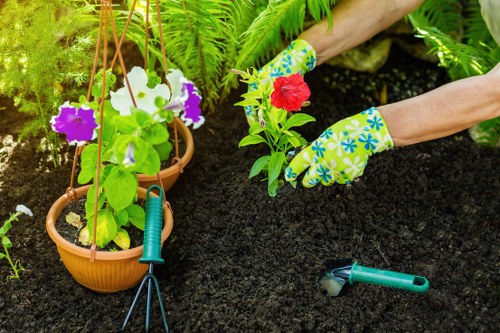
Introduction to Garden Maintenance
Maintaining a beautiful garden in Shadwell requires diligence, knowledge, and the right techniques. Whether you're a seasoned gardener or a novice, understanding the essentials of garden upkeep can transform your outdoor space into a lush, vibrant oasis.
Shadwell's unique climate and soil conditions present both challenges and opportunities for gardeners. By tailoring your maintenance strategies to local conditions, you can ensure your garden thrives all year round.
In this comprehensive guide, we'll explore the key aspects of garden maintenance in Shadwell, offering practical tips and insights to help you achieve a stunning and sustainable garden.
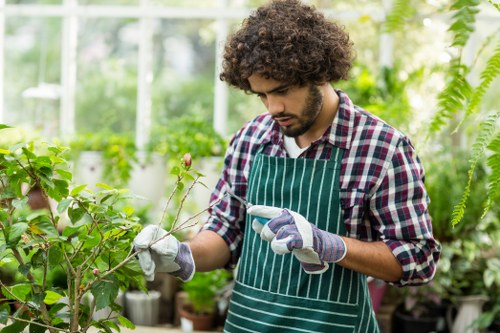
Seasonal Garden Maintenance
Spring Maintenance
Spring is a critical time for garden maintenance in Shadwell. As temperatures rise, it's essential to prepare your garden for the growing season.
- Soil Preparation: Test your soil's pH levels and amend it with compost or other organic matter as needed.
- Planting: Begin planting spring flowers and vegetables to take advantage of the longer daylight hours.
- Pruning: Trim back any dead or damaged branches to promote healthy growth.
Regular maintenance during spring sets a strong foundation for the rest of the year, ensuring your plants receive the nutrients and care they need.
Tip: Mulching in the spring helps retain moisture and suppress weeds, giving your plants a better start.
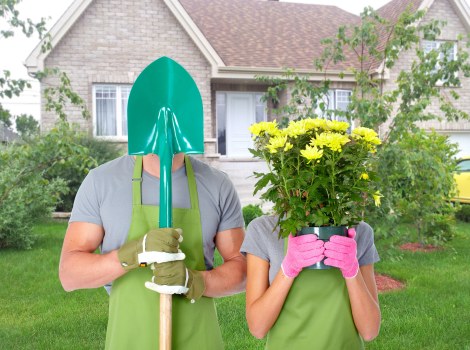
Summer Garden Care
Managing Heat and Drought
Summer brings intense heat and occasional droughts to Shadwell, making water management crucial for garden health.
- Watering: Implement a consistent watering schedule, preferably in the early morning or late evening to reduce evaporation.
- Shade Protection: Use shade cloths or plant strategically to protect sensitive plants from extreme sunlight.
- Pest Control: Monitor for pests that thrive in warm weather and address issues promptly.
Proper summer maintenance ensures your garden remains vibrant and your plants stay healthy despite the challenging conditions.
Pro Tip: Installing a drip irrigation system can provide efficient and targeted watering, conserving water and reducing labor.
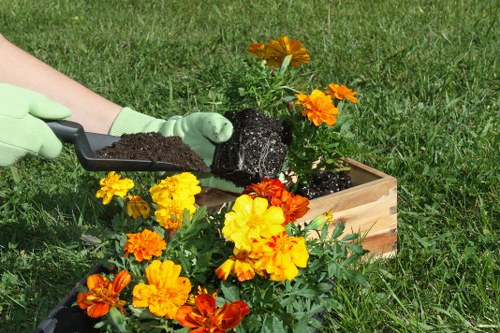
Autumn Garden Preparation
Preparing for Cooler Months
As temperatures begin to drop, autumn is the perfect time to prepare your garden for the winter ahead.
- Leaf Cleanup: Regularly remove fallen leaves to prevent mold and pests from taking hold.
- Planting: Plant late-season vegetables and bulbs that will bloom in the spring.
- Soil Enrichment: Add compost and mulch to nourish the soil and protect roots during the colder months.
Taking these steps in autumn helps maintain soil health and sets the stage for a fruitful garden in the next growing season.
Note: Covering perennial plants can shield them from frost and extend their growing period.
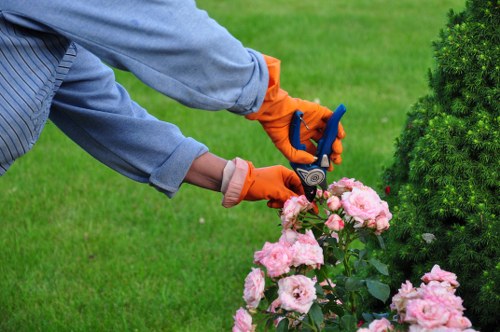
Winter Garden Strategies
Maintaining Your Garden in the Off-Season
Winter may seem like a dormant period for gardens, but with the right maintenance, your garden can remain healthy and ready for spring.
- Protection: Use burlap or frost blankets to protect sensitive plants from harsh weather.
- Tool Maintenance: Clean and store garden tools properly to extend their lifespan.
- Planning: Reflect on the past seasons and plan for future garden projects.
Even during winter, staying engaged with your garden ensures that you're prepared for the next growing cycle.
Remember: Winter is an excellent time for garden planning and organization, laying the groundwork for a successful year ahead.
Essential Tools for Garden Maintenance
Having the right tools is essential for effective garden maintenance in Shadwell. Here's a list of must-have tools for every gardener:
- Pruning Shears: For trimming and shaping plants.
- Garden Fork: Ideal for turning soil and aerating beds.
- Watering Can or Hose: Essential for consistent watering.
- Gloves: Protect your hands from thorns and dirt.
- Wheelbarrow: Useful for transporting soil, compost, and plants.
Investing in quality tools can make garden maintenance tasks easier and more efficient.
Tip: Regularly clean and maintain your tools to ensure they remain in good working condition.
Choosing the Right Plants for Shadwell
Selecting plants that thrive in Shadwell's climate is crucial for a sustainable and low-maintenance garden.
- Perennials: Plants like Lavender and Hostas offer long-term beauty with minimal upkeep.
- Annuals: Petunias and Marigolds provide vibrant color throughout the growing season.
- Vegetables: Tomatoes, Lettuce, and Beans are excellent choices for home gardens.
Consider native plants as they are well-adapted to the local environment, requiring less water and care.
Pro Tip: Mix high-maintenance and low-maintenance plants to balance beauty with ease of care.
Soil Health and Fertilization
Healthy soil is the foundation of a thriving garden. Regular soil testing can help you understand your soil's needs.
- Composting: Adding compost improves soil structure and provides essential nutrients.
- Fertilizers: Use organic or synthetic fertilizers based on your soil test results.
- pH Balancing: Adjust the soil pH to suit the specific needs of your plants.
Maintaining soil health ensures that your plants have access to the nutrients they need to grow strong and healthy.
Remember: Regularly amend your soil to maintain its fertility and structure.
Pest and Disease Management
Keeping pests and diseases at bay is vital for a healthy garden. Integrated Pest Management (IPM) is an effective approach.
- Identification: Properly identify pests and diseases to choose the most effective treatment.
- Natural Predators: Encourage beneficial insects like ladybugs to control pest populations.
- Organic Treatments: Use neem oil or insecticidal soaps as eco-friendly pest control options.
Regular monitoring and early intervention can prevent minor issues from escalating into major problems.
Tip: Remove and destroy infected plants to prevent the spread of diseases.
Pruning and Trimming Techniques
Proper pruning and trimming are essential for plant health and aesthetic appeal.
- When to Prune: Understand the specific pruning times for different plant species.
- Techniques: Use clean, sharp tools and make precise cuts to encourage healthy growth.
- Maintenance: Regular pruning prevents overgrowth and promotes air circulation.
Effective pruning enhances the natural shape of plants and stimulates new growth.
Pro Tip: Always sanitize your pruning tools before and after use to prevent disease transmission.
Mulching for Moisture and Weed Control
Mulching is a simple yet effective practice in garden maintenance, offering multiple benefits.
- Moisture Retention: Mulch helps keep the soil moist by reducing evaporation.
- Weed Suppression: A layer of mulch inhibits weed growth, reducing maintenance efforts.
- Temperature Regulation: Mulch moderates soil temperature, protecting roots from extreme conditions.
Choosing the right type of mulch, such as organic options like bark or straw, can enhance these benefits.
Remember: Replenish mulch annually to maintain its effectiveness and appearance.
Irrigation Systems and Water Management
Efficient water management is crucial for garden maintenance in Shadwell's climate.
- Drip Irrigation: Provides targeted watering directly to plant roots, conserving water.
- Sprinkler Systems: Ideal for covering larger areas, but may require more water.
- Rainwater Harvesting: Collecting rainwater can reduce reliance on municipal water sources.
Implementing an effective irrigation system ensures your garden stays hydrated without wasting resources.
Tip: Schedule irrigation during cooler parts of the day to minimize water loss through evaporation.
Dealing with Weeds
Weeds can quickly take over a garden if not managed properly. Effective weed control is a key aspect of garden maintenance.
- Manual Removal: Regularly hand-pull weeds to prevent them from spreading.
- Mulching: Apply a thick layer of mulch to suppress weed growth.
- Herbicides: Use organic or chemical herbicides as a last resort for stubborn weeds.
Combining these methods can help maintain a weed-free garden, promoting healthier plant growth.
Pro Tip: Address weeds promptly to prevent them from seeding and increasing their presence.
Composting and Waste Management
Composting is an environmentally friendly way to manage garden waste and enrich your soil.
- Setup: Create a compost bin in your garden area, ensuring it has proper drainage and aeration.
- Materials: Use a mix of green materials (like grass clippings) and brown materials (like dried leaves).
- Maintenance: Turn the compost regularly to speed up decomposition and prevent odors.
Composting reduces household waste and provides a rich source of nutrients for your garden.
Remember: Avoid adding meat, dairy, or oily foods to your compost to prevent attracting pests.
Garden Safety and Best Practices
Maintaining a safe garden environment is essential for your well-being and that of your family.
- Tool Safety: Always use garden tools as intended and store them safely when not in use.
- Chemical Use: Handle fertilizers and pesticides with care, following label instructions.
- Ergonomics: Use proper techniques to avoid strain or injury while gardening.
Adhering to safety practices ensures a pleasant and injury-free gardening experience.
Tip: Wear protective gear, such as gloves and goggles, when performing heavy garden maintenance tasks.
Enhancing Garden Aesthetics
Aesthetic appeal is a significant aspect of garden maintenance, contributing to its overall beauty and harmony.
- Plant Arrangement: Design thoughtful plant layouts to create visual interest and balance.
- Pathways and Borders: Define garden spaces with pathways and borders for structure.
- Decorative Elements: Incorporate garden ornaments, lighting, and seating to enhance functionality and beauty.
By focusing on aesthetics, you can create a garden that is not only functional but also a delightful space to enjoy.
Pro Tip: Use a variety of plant heights and textures to add depth and dimension to your garden design.
Sustainable Gardening Practices
Sustainability is increasingly important in garden maintenance, promoting environmental health and resource conservation.
- Organic Gardening: Avoid synthetic chemicals and embrace natural fertilizers and pest control methods.
- Water Conservation: Utilize efficient irrigation techniques and drought-resistant plants.
- Biodiversity: Plant a diverse range of species to support local wildlife and enhance ecosystem balance.
Implementing sustainable practices not only benefits your garden but also contributes positively to the broader environment.
Remember: Sustainability in gardening leads to long-term health and resilience of your garden ecosystem.
Hiring Professional Garden Maintenance Services
While DIY garden maintenance is rewarding, sometimes hiring professionals can enhance your garden's upkeep.
- Expertise: Professional gardeners bring specialized knowledge and experience.
- Time-Saving: Outsourcing maintenance allows you to focus on other aspects of your life.
- Advanced Services: Professionals can offer services like landscape design, soil testing, and pest management.
Consider hiring local garden maintenance services in Shadwell to ensure your garden receives the best care tailored to the area's specific needs.
Call to Action: Contact us today to schedule a consultation and take the first step towards a beautifully maintained garden.
Conclusion
Effective garden maintenance in Shadwell involves a combination of proper planning, regular care, and sustainable practices. By understanding the seasonal requirements, investing in the right tools, and possibly enlisting professional help, you can cultivate a garden that is both beautiful and resilient.
Whether you're aiming to grow vibrant flowers, nutritious vegetables, or simply enjoying a serene outdoor space, maintaining your garden with these strategies will ensure its success and longevity.
Don't wait any longer – Book your service now and transform your garden into the oasis you've always envisioned.